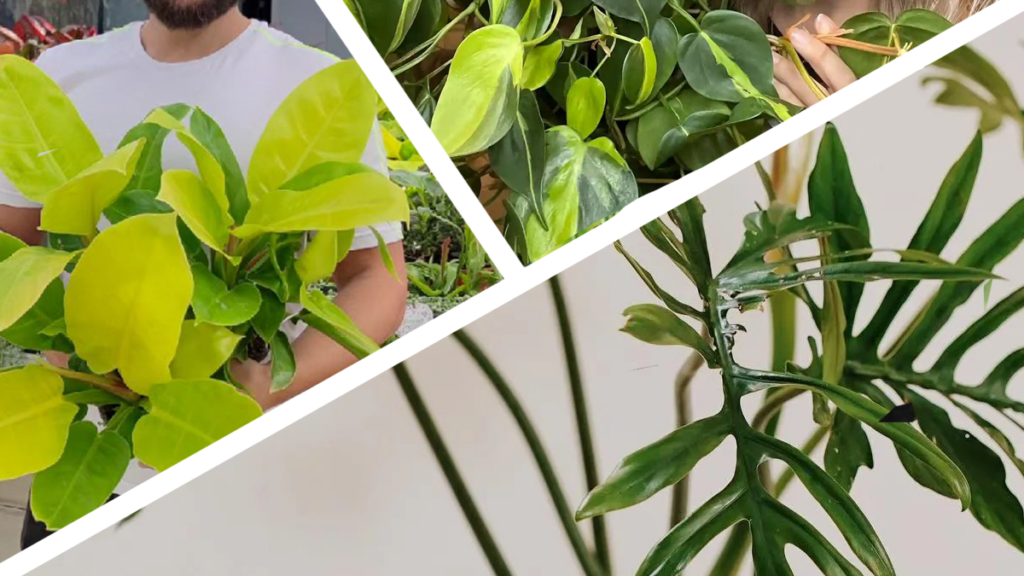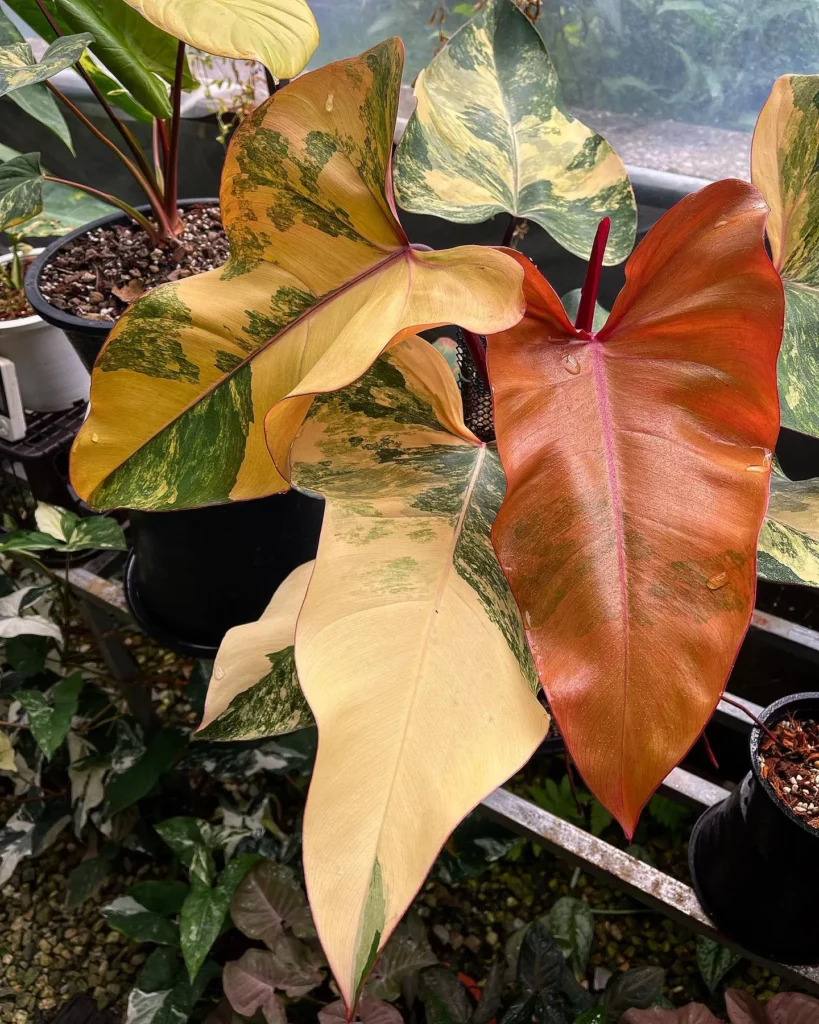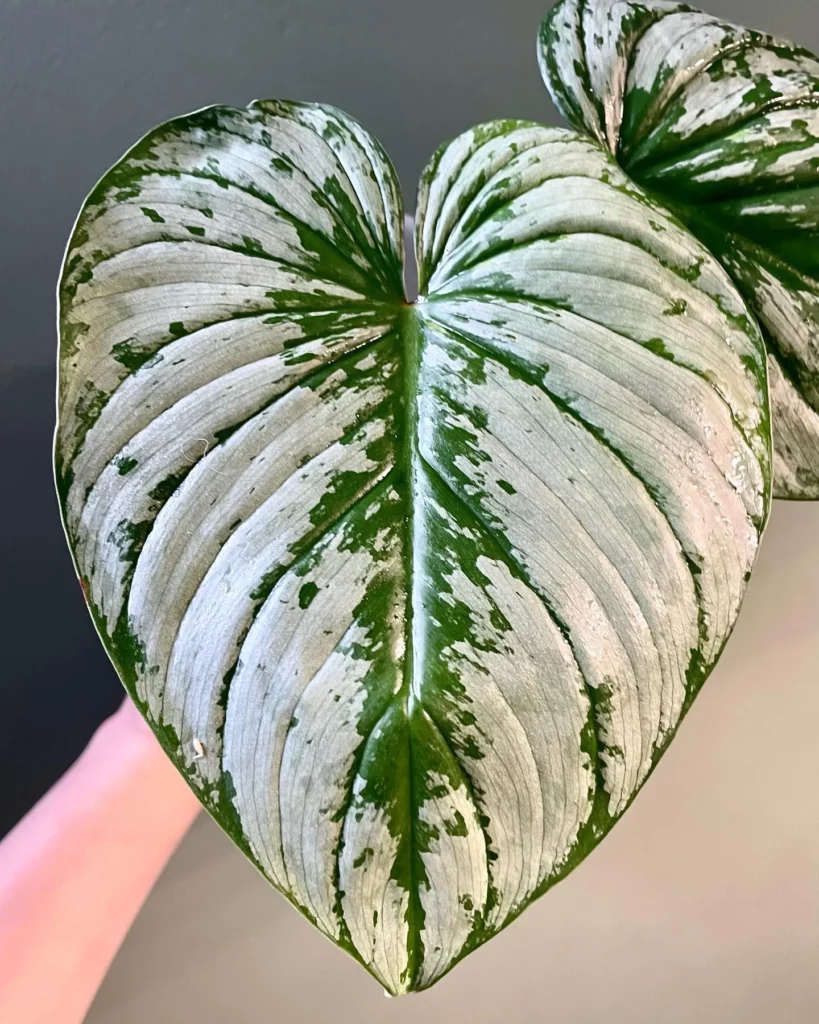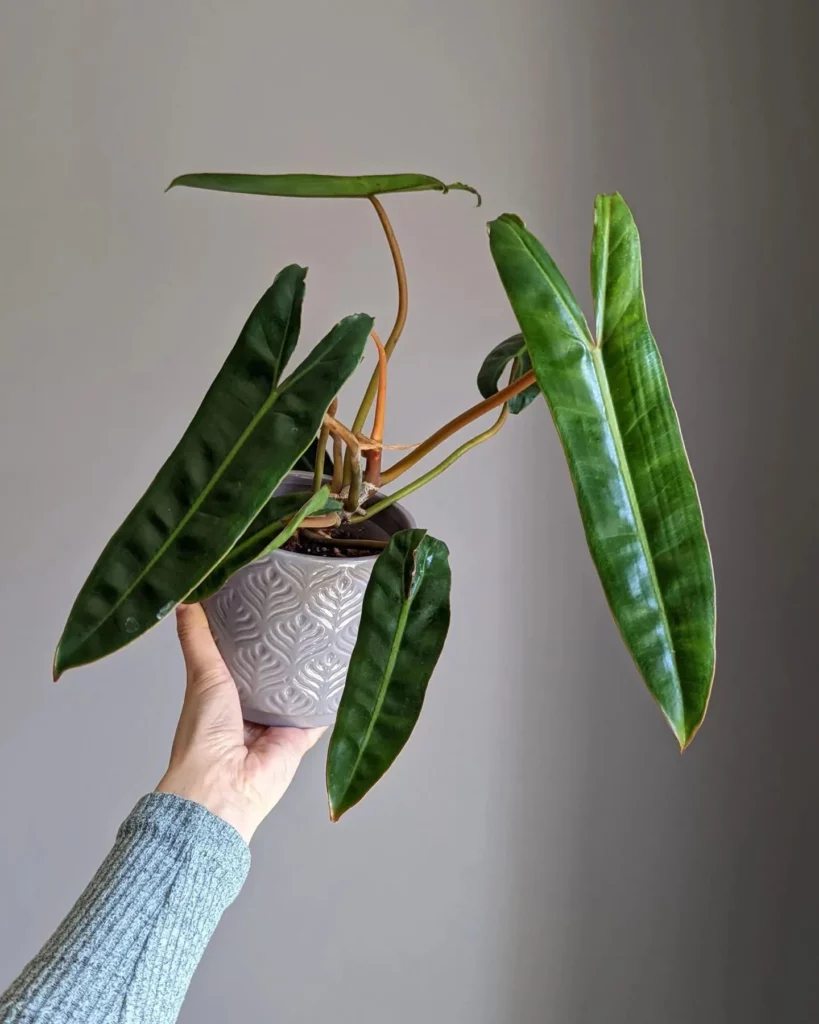Welcome to the world of Philodendron Jose Buono, a unique and stunning variety of the beloved Philodendron plant. If you have a passion for nurturing indoor gardens and want to add a touch of tropical beauty to your space, this article is for you. Here, we will provide you with essential tips and guidance on how to successfully grow and care for the Philodendron Jose Buono, ensuring a thriving and lush indoor garden.
Key Takeaways:
- Learn how to nurture the Philodendron Jose Buono for a thriving indoor garden.
- Discover the striking appearance of the Philodendron Jose Buono and its variegated foliage.
- Master the art of watering to keep your Philodendron Jose Buono in top shape.
Appearance of the Philodendron Jose Buono



The Philodendron Jose Buono is a stunning houseplant known for its captivating appearance. Its variegated foliage is the highlight of this plant, with heart-shaped leaves showcasing deep green color and contrasting lighter spots. The prominent veins add an intricate detail to each leaf. With the potential to reach heights of up to 4 feet, the Philodendron Jose Buono brings a touch of exotic beauty to any indoor space, creating a lush and vibrant atmosphere.
Light Requirements for the Philodendron Jose Buono



The Philodendron Jose Buono is a stunning houseplant that will thrive with the right amount of light. It prefers bright, indirect light for optimal growth, making it perfect for a spot near a north or east-facing window. Bright indirect light mimics the filtered sunlight found in its native tropical habitats, allowing the plant to photosynthesize and produce energy efficiently.
While the Philodendron Jose Buono does well with bright indirect light, it can also tolerate lower light conditions. This adaptability makes it an excellent choice for spaces with limited natural light, such as offices or rooms with small windows. Just be aware that in lower light conditions, the plant may grow more slowly and have less vibrant foliage.
It’s important to avoid exposing the Philodendron Jose Buono to direct sunlight, as this can scorch its leaves. This is especially true if your plant is in a south or west-facing window, where intense sunlight can burn the delicate foliage. If you notice yellow or brown leaves on your Philodendron Jose Buono, it may be a sign that it’s receiving too much light. On the other hand, if the leaves are dark green and have less variegation, it could indicate that the plant is not getting enough light.
Watering the Philodendron Jose Buono



Properly watering your Philodendron Jose Buono is essential for its health and vitality. By following these watering guidelines, you can ensure that your plant remains happy and free from issues such as root rot.
Consistent Moisture, Not Waterlogged
The Philodendron Jose Buono prefers a consistently moist root environment. However, it is important to avoid overwatering and creating waterlogged conditions. This can lead to root rot, a condition that can severely damage your plant.
Dry Top Inch before Watering
Before watering your Philodendron Jose Buono, make sure the top inch of soil has dried out. Insert your finger into the soil up to your knuckle, and if it feels dry, it’s time to water. This will prevent overwatering and help maintain the ideal level of soil moisture.
Thorough Watering and Drainage
When you do water your Philodendron Jose Buono, ensure that you water thoroughly. This means watering until water starts to come out of the drainage holes at the bottom of the pot. Thorough watering helps to flush out any excess salts and ensures that the entire root ball receives adequate moisture.
It is crucial to use pots with drainage holes so that excess water can freely escape. This prevents water from pooling at the bottom of the pot, which can lead to root rot. Avoid letting your plant sit in standing water, as this can suffocate the roots and promote fungal growth.
Fertilizing the Philodendron Jose Buono



Like all plants, the Philodendron Jose Buono requires proper nutrients to support its growth and ensure it thrives in your indoor garden. It is important to provide the necessary fertilization to keep your Philodendron Jose Buono healthy and vibrant.
Choosing the Right Fertilizer
When fertilizing your Philodendron Jose Buono, it is recommended to use a balanced fertilizer. A balanced fertilizer contains equal ratios of nitrogen (N), phosphorus (P), and potassium (K), such as a 10-10-10 or 20-20-20 formulation. This ensures that your plant receives a well-rounded supply of essential nutrients.
Look for a fertilizer specifically formulated for houseplants or foliage plants. These fertilizers usually contain the necessary micronutrients that your Philodendron Jose Buono needs to thrive.
Application Frequency
During the growing season, which typically spans spring and summer, it is advisable to fertilize your Philodendron Jose Buono once a month. This provides a consistent supply of nutrients to support its growth and helps maintain its overall health.
However, it’s important to follow the instructions on the fertilizer package for specific application rates and guidelines. Overfertilizing can be harmful to your Philodendron Jose Buono and may lead to nutrient burn or other issues.
Application Method
When applying fertilizer, dilute it to half or quarter strength. This prevents the risk of overfertilization and ensures your Philodendron Jose Buono receives an appropriate amount of nutrients.
Water your Philodendron Jose Buono thoroughly before applying the diluted fertilizer solution. This helps prevent any potential root burn from the fertilizer. Apply the diluted fertilizer solution to the soil around the plant, distributing it evenly.
Remember to avoid getting fertilizer on the leaves, as it can cause leaf burn. If any fertilizer does come into contact with the foliage, wipe it off with a clean, damp cloth.
Additionally, it is advisable to flush the pot occasionally with plain water to remove any buildup of salt or fertilizer residue.
Potting the Philodendron Jose Buono



When potting the Philodendron Jose Buono, it is essential to choose the right pot size to promote healthy growth. For new plants or cuttings, start with a smaller pot, around 4-6 inches in diameter, to provide a snug environment for root development.
As the Philodendron Jose Buono matures and its root system expands, transfer it to a larger pot. Choose a pot that is one size bigger than the previous one to accommodate the growing plant. This will give the roots more room to spread while maintaining stability.
In addition to selecting an appropriate pot size, it’s crucial to use well-draining soil. The Philodendron Jose Buono prefers a soil mix that allows excess water to flow freely, preventing waterlogged conditions and the risk of root rot. Look for a well-draining potting mix specifically formulated for tropical plants or create your own by mixing equal parts of peat moss, perlite, and vermiculite.
When potting the Philodendron Jose Buono, make sure the pot has drainage holes at the bottom to facilitate proper water drainage. This will help prevent water from pooling at the bottom of the pot, which could lead to root rot. Ensure that the pot is also clean and free from any debris or old roots that could impede drainage.
Propagation of the Philodendron Jose Buono



If you want to expand your Philodendron Jose Buono collection or share this beautiful cultivar with others, propagation through stem cuttings is a simple and effective method. Follow these steps to successfully propagate your Philodendron Jose Buono:
- Select a healthy stem on your Philodendron Jose Buono that has several leaves.
- Using clean and sharp pruners, make a clean cut just below a node on the stem. Nodes are the points where leaves emerge. This is where new roots will form.
- Remove any lower leaves along the stem to reduce the risk of rotting in the propagation process.
- To encourage root development, dip the cut end of the stem in a rooting hormone. This hormone will help stimulate root growth.
- Prepare a pot with moist, well-draining potting soil.
- Plant the stem into the pot, burying the cut end into the soil. Make sure the remaining leaves are above the soil surface.
- Creating a greenhouse-like environment is essential for successful propagation. Cover the pot with a clear plastic bag and secure it with a rubber band or twist tie.
- Place the pot in a warm and bright location with indirect sunlight. Avoid direct sunlight, as it can lead to excessive heat and moisture buildup within the bag.
- Check the pot regularly to ensure the soil remains moist but not overly wet. If necessary, mist the leaves with water to provide additional humidity.
- After a few weeks, roots should begin to form. Gently tug on the stem to check for resistance, indicating root growth.
- Once the roots are well-established, usually after 6-8 weeks, it’s time to transplant the cutting into a new pot. Choose a pot with well-draining soil and continue to care for the plant as you would with a mature Philodendron Jose Buono.
Growth and Development of the Philodendron Jose Buono



The Philodendron Jose Buono is a relatively low-maintenance plant that can thrive with proper care. However, to ensure its healthy growth and development, occasional pruning may be necessary. Pruning helps maintain the plant’s shape and prevents leggy growth, ensuring a bushy and compact appearance.
To prune the Philodendron Jose Buono, identify tall stems that are growing excessively and trim them back just above a leaf node. This encourages new growth and helps maintain the plant’s desired shape. By selectively removing longer stems, you can prevent the plant from becoming leggy and promote a fuller appearance.
Pruning not only helps maintain the plant’s aesthetics but also aids in its overall health. Overgrown plants can become stressed and develop yellowing leaves. Trimming back excessive growth allows the plant to redirect nutrients to healthier areas, promoting rejuvenation and vitality.
While pruning is beneficial, it’s important to avoid overdoing it. Remove only the necessary stems to avoid weakening the plant. Additionally, make clean cuts using sharp, sterilized tools to minimize the risk of infection or damage.
Pests and Diseases Affecting the Philodendron Jose Buono
Although the Philodendron Jose Buono is known for its resilience against pests and diseases, it can occasionally face challenges from common houseplant pests. The most common pests that may affect your Jose Buono Philodendron include spider mites, mealybugs, and scale insects. It’s important to regularly inspect your plants for signs of infestation so that you can take prompt action if necessary.
To treat these pests, consider using organic insecticidal soap or neem oil, as they are effective and safe options for this plant. Thoroughly apply these treatments, making sure to cover both the upper and lower surfaces of the leaves. Remember to follow the instructions on the product label for best results.
Prevention is key to keeping your Philodendron Jose Buono healthy and thriving. By maintaining proper airflow around your plant and keeping it clean, you can create an environment less conducive to pest infestation. Additionally, avoiding overwatering your plant is crucial, as excessive moisture can attract pests and contribute to the development of diseases.
Implementing these preventative measures and promptly addressing any pest infestations will help ensure the long-term health and beauty of your Philodendron Jose Buono
FAQ
How tall does the Philodendron Jose Buono grow?
The Philodendron Jose Buono can grow up to 4 feet tall.
What kind of light does the Philodendron Jose Buono prefer?
The Philodendron Jose Buono prefers bright, indirect light.
Can the Philodendron Jose Buono tolerate lower light conditions?
Yes, the Philodendron Jose Buono can tolerate lower light conditions.
How often should I water the Philodendron Jose Buono?
The Philodendron Jose Buono prefers to be consistently moist but not waterlogged. Allow the top inch of soil to dry out before watering again.
How can I prevent root rot in the Philodendron Jose Buono?
To prevent root rot, use pots with drainage holes and avoid letting the plant sit in standing water.
How often should I fertilize the Philodendron Jose Buono?
Fertilize the Philodendron Jose Buono once a month during the growing season (spring and summer) with a balanced fertilizer.
What size pot should I use for potting the Philodendron Jose Buono?
Start with a smaller pot, around 4-6 inches in diameter, for new plants or cuttings. As the plant matures, transfer it to a larger pot, one size bigger than the previous one.
How can I propagate the Philodendron Jose Buono?
You can propagate the Philodendron Jose Buono through stem cuttings. Select a healthy stem with leaves, make a clean cut just below a node, remove lower leaves, and dip the cut end in rooting hormone. Then plant the stem in a pot with moist potting soil.
How do I prune the Philodendron Jose Buono?
To prune the Philodendron Jose Buono, trim back tall stems just above a leaf node to encourage new growth and maintain a bushy shape.
How can I prevent pests and diseases in the Philodendron Jose Buono?
Maintain proper airflow, cleanliness, and avoid overwatering to help prevent pests and diseases. Regularly inspect the plant for signs of infestation and take immediate action if necessary. Use organic insecticidal soap or neem oil for treatment.




